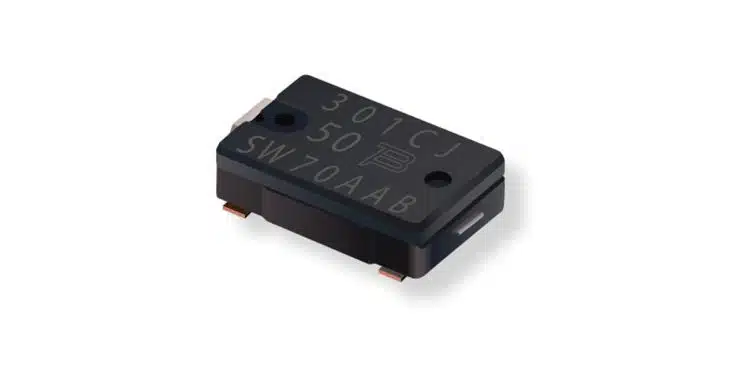Bourns is pleased to announce the introduction of its new Model SW Resettable Mini-breaker Thermal Cutoff (TCO) device.
This new model uses the highly successful Model SC Series footprint that was released in 2019 and offers a trip temperature setting of 70 °C ±5 °C. This new design can provide overtemperature protection for a wide range of applications such as LED systems, wireless charging coils, motors, and printed circuit board components, as well as the ability to perform as an overtemperature sensor.
The new Model SW complements the latest Model SD series, functioning as a lower current protection device.
With maximum resistance values of 5 mΩ, this component has a hold current of 3 A at 60 °C and a contact rating of up to 100 V peak (AC 128 kHz). The Model SW is the smallest surface mount mini-breaker offered by Bourns with a footprint size of 4.7 mm x 2.8 mm and a height of just 0.94 mm.
This device has been designed to withstand humid environments, utilizing our highest rated corrosion resistance bimetal mechanism. The new Model SW device is RoHS compliant and halogen free.
Features
- Miniature Thermal Cutoff (TCO) device
- Surface mount, smallest body size
- Overtemperature and overcurrent protection
- Controls abnormal, excessive current virtually instantaneously, up to rated limits
- High corrosion resistance
- RoHS compliant* and halogen free**
Applications
- LED systems
- Wireless charging coils
- Motors
- Printed circuit board components
- Overtemperature sensing































